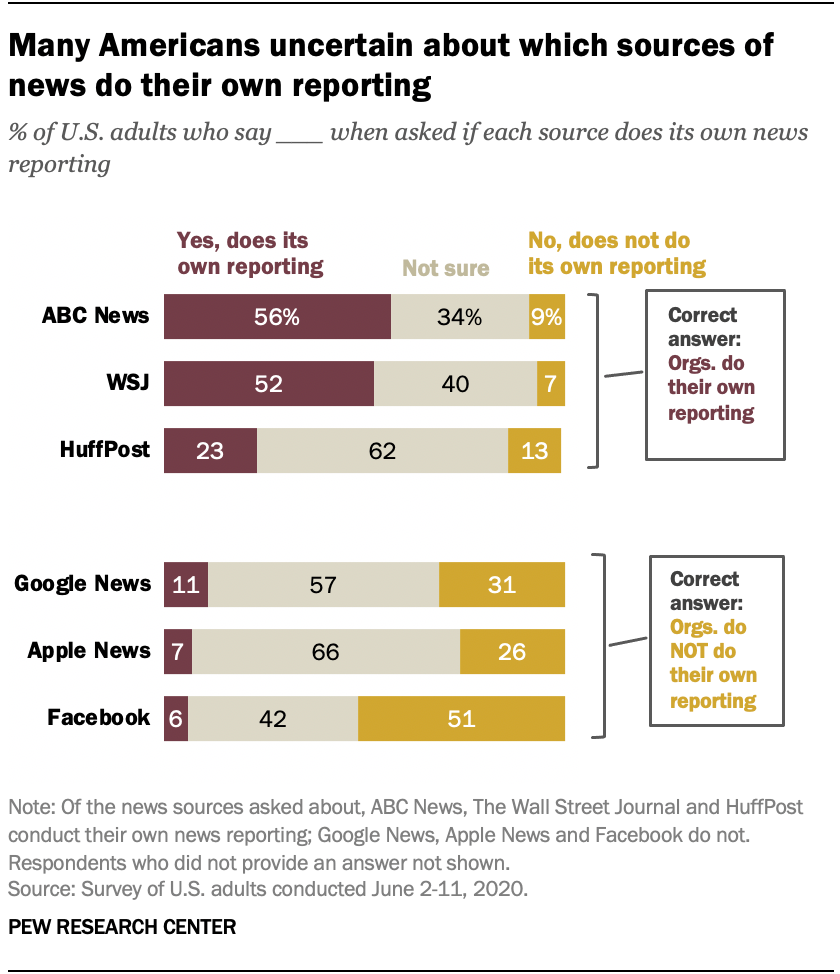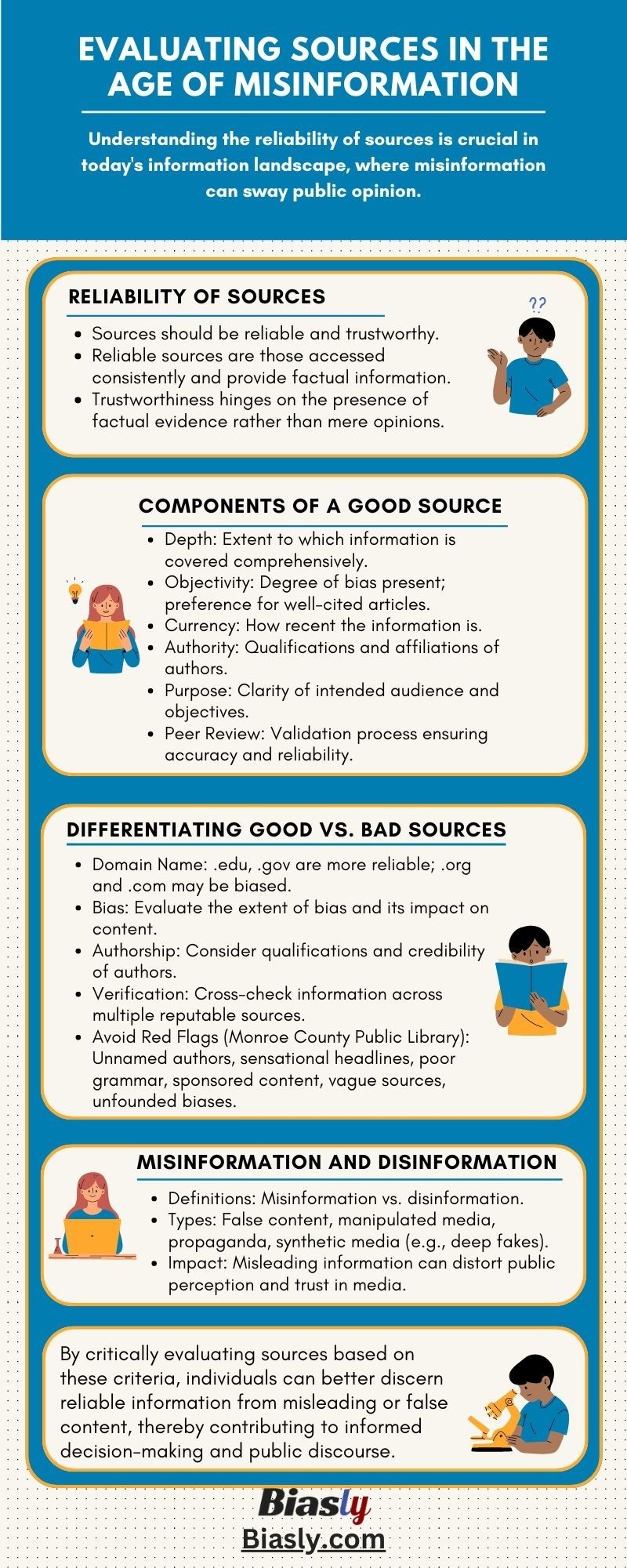
Sources are very important to any piece of writing or article or really any piece of information. The validity of sources can be crucial to any argument or article. Increasingly, there have been a lot of misleading sources that can be interpreted as misinformation, so it’s always good to judge the validity of a source before using it. Sources can make or break your article and can be able to sway public opinion.
What Are Good Sources?
So what do good sources have in common? They tend to be reliable and trustworthy, but what makes a source reliable and trustworthy? According to the University of North Alabama, being reliable usually involves a process where a person goes back to the source on a repetitive basis. Being trustworthy usually is a matter of facts vs opinions where the more facts there are, the more trustworthy a source becomes.
The Five Things That Make Up a Good Source
To explore further into what makes a good source, the University of North Alabama has broken down the components of what makes a good source into five specific things: depth, objectivity, currency, authority, and purpose.
- The depth of a source refers to how deep a particular source goes into the information that it is providing. Does it provide a simple overview or goes deep into the information that it is covering and providing?
- Objectivity refers to how biased a source can potentially be. It recommends checking how biased a source is, whether the bias affects the article, whether someone can profit from the biased article, and lastly how many citations said article uses to back up its claims.
- Examine how currency reveals how recent the information provided is. Are the sources used ancient or recent? The more recent the sources are, usually the better it is unless it’s about historical events.
- Authority looks at the qualifications (degrees) and affiliations (organizations) and how many authors there are to an article.
- Purpose and its intended audience are other things to look for. Usually articles are pretty specific in this instead of being vague.
- Finally, after the article is done, the last step is to see whether it’s been peer reviewed. This means whether said article has been revised and edited by other people, making sure that the information provided is accurate and reliable. The source can be deemed ready or worthy once it has been peer reviewed.
Biasly’s rating methodologies expand upon these requirements using analytics and AI to analyze various points and leanings within articles.
Differentiating Good and Bad Sources
If all that makes a good source, then naturally what makes a bad source? According to UTEP Connect, there are 4 different things that differentiate good sources from bad sources.
- The first is the domain name. .edu means education; .gov means government; .org means nonprofit; and .com means commercial.
- .edu and .gov are the most reliable websites to use.
- The amount of bias should also be checked; there’s a good chance that it’s higher under .org and .com websites since they usually have some sort of purpose behind them.
- Another difference is to take a look at who wrote the sources.
- How much credentials and qualifications do the author of the source have? Is the source filled with facts or opinions? Is the information from these sources recent or old relatively speaking? These are all important questions to answer when evaluating a source.
- Next, do further research to make sure that the original source you use has the same or similar information as that. If they differ, it could potentially be a red flag.
- Regarding websites such as Wikipedia, it’s better to look into the sources that an information source like Wikipedia uses rather than using Wikipedia itself.
According to Monroe County Public Library, bad sources include the following: unnamed authors who lack credentials (one or both), sensational headline, headlines appear only on social media, poor spelling and grammar, sponsored content or advertisements, vague sources, unfounded bias and accusations. These are some red flags that one should look for, and if they appear, then the source should be viewed with some doubt.
Monroe County Public Library says that the nine things that one should look for in evaluating every source is the following: purpose, go to cited source, see what the bias is about, note the URL, see what you’re looking at, beware of sensationalized news, don’t believe every one of your personal thoughts about the article, check the citations on photos, and avoid sources that echo one viewpoint.
The Dangers of Misinformation
Misinformation is a deadly form of misleading information that can lead people astray and misinform people on critical topics. This has increased in usage in politics, and many Americans are starting to distrust many mainstream media sources.
According to Pew Research Center, only half of all Americans believe that ABC News and WSJ do their own reporting, while a solid majority do not think that Huff Post do their own reporting. In fact, ABC News, Wall Street Journal, and Huffington Post do their own research, with Huffington Post notably having many liberal stances and the Wall Street Journal having some conservative stances, so some of these sources do have media bias.
Americans on News Source’s Validity from Pew Research Center

Those who are avid followers of news sources generally are able to identify accurate reporting better than people who do not. Americans who are most able to identify accurate news reporting tend to be younger, college educated, and richer. There does not seem to be a massive partisan difference.
Types of Misinformation and Disinformation
According to Types of Misinformation and Disinformation, misinformation is false or inaccurate information, while disinformation is deliberate, misleading information. Some examples of misinformation and disinformation are for content, anything that’s false, manipulated, imposter, misleading, false, and sponsored. Additionally, false connections and context, propaganda, and satire/paradoy are other examples.
The rise of artificial intelligence has led to new forms of misinformation and disinformation called synthetic media. Types of synthetic media include deep fakes and speech synthesis. Some ways to manipulate conversations using social media include sockpuppeting, sealioning, astroturfing, and catfishing.
Types of Synthetic Media and Social Media Manipulation
| Name | Type | Description |
| Deepfakes | Synthetic Media | Person in existing image or video is replaced by someone else |
| Speech Synthesis | Synthetic Media | Artificially produce human speech using computers or other technology |
| Sockpuppet | Social Media Manipulation | Misleading uses of online identities to support a person and/or organization; manipulate public opinion; circumvent restrictions, suspension, or website ban. |
| Sealioning | Social Media Manipulation | Trolling or harassment where people are question or asked for evidence in a civil-sounding voice. |
| Astroturfing | Social Media Manipulation | Message sponsors appearing like grassroot participants. Aims to give certain organizations credibility. |
| Catfishing | Social Media Manipulation | A form of fraud where a person creates a sockpuppet to target a certain victim on a social media platform. It can be in the form of romance or financial scams. |
























